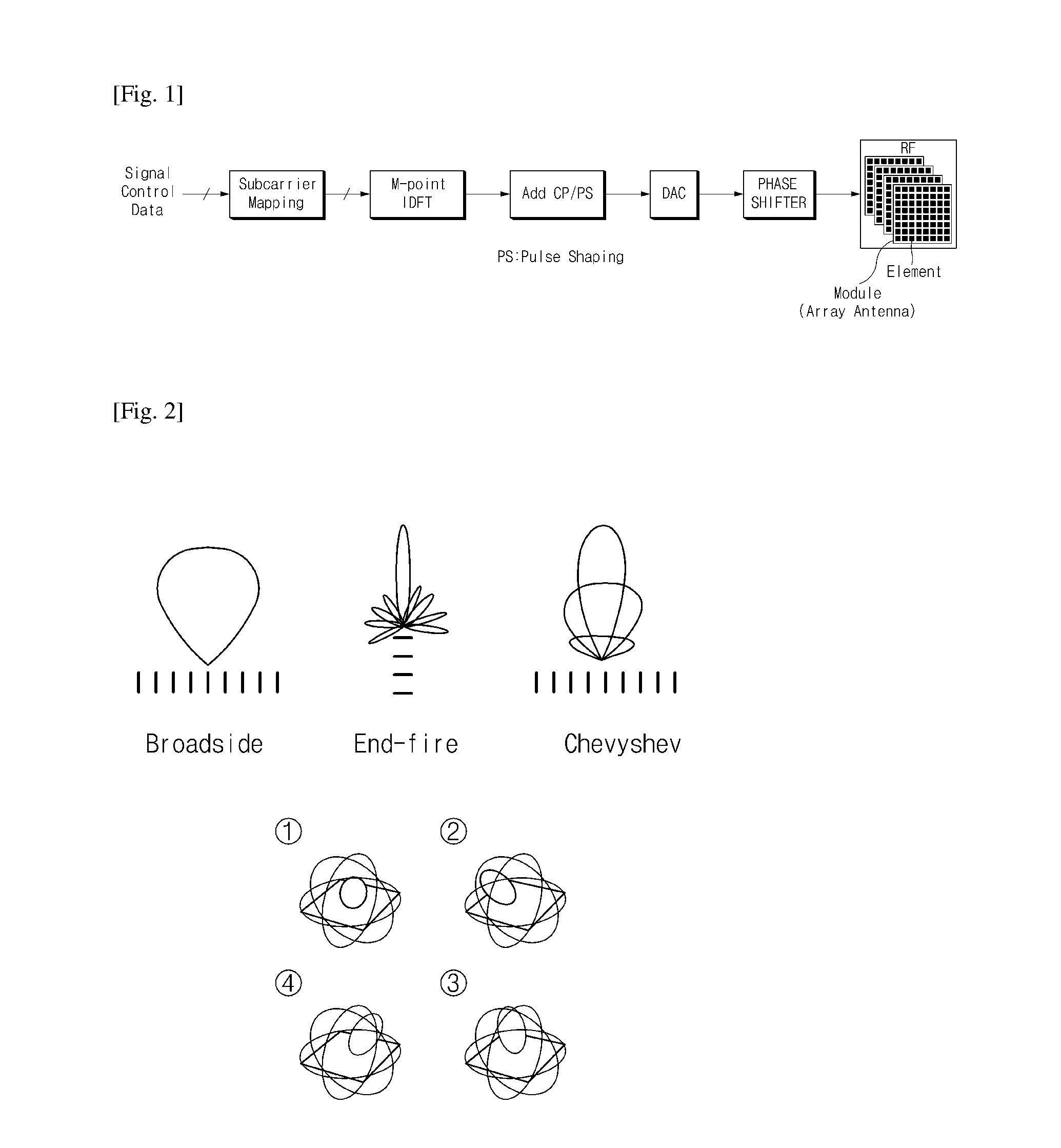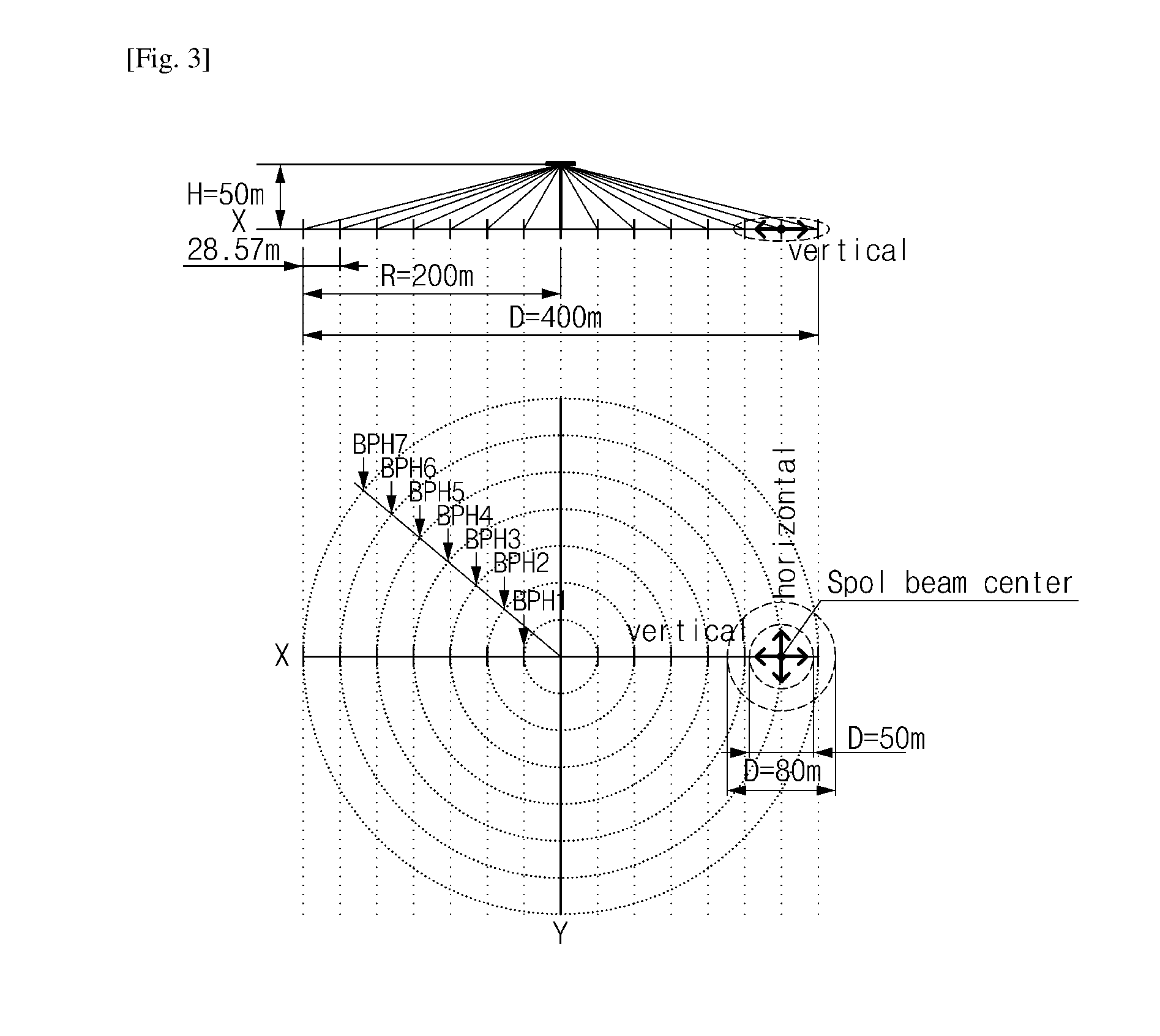Antenna structure based on millimeter wave and operation method thereof
a technology of millimeter wave and antenna structure, applied in the direction of resonant antennas, individually energised antenna arrays, wireless commuication services, etc., can solve the problems of large signal attenuation, short reaching distance, strong linearity, etc., and achieve the effect of reducing the possibility of connection severan
- Summary
- Abstract
- Description
- Claims
- Application Information
AI Technical Summary
Benefits of technology
Problems solved by technology
Method used
Image
Examples
exemplary embodiment 1
BPH-Based Stacked Base Station Antenna Structure Having Frequency Division Overlapping Beam Layout Structure
[0104]FIG. 7 is a diagram illustrating one example of beam planning using effective divided projection beam areas according to an exemplary embodiment of the present invention.
[0105]The example of the layout illustrated at the lower end of FIG. 6 may perform beam planning illustrated in FIG. 7 (while beams that belong to Part 1 are prevented from overlapping with each other and beams that belong to Part 2 are also prevented from overlapping with each other, a coverage hole part of Part 1 is covered by Part 2 and on the contrary, a coverage hole part of Part 2 is covered by Part 1). In this case, the antenna structure of the base station is similar to that of FIG. 4. Unlike the non-overlapping beam layout structure at the upper end of FIG. 6, the location of the beamforming antenna mounted on the BPH may vary. The layout has an advantage in that rapid performance deterioration ...
exemplary embodiment 2
Group Beamforming Antenna Based Stacked Base Station Antenna Structure
[0106]FIG. 8 is a diagram illustrating an example considering mechanical tilting of a beamforming antenna according to an exemplary embodiment of the present invention.
[0107]In the entire base station antenna structure of FIG. 4 to which the overlapping beam layout structure of FIG. 7 is applied, the location of the beamforming antenna for each BPH is maintained as it is and the mechanical tilting may be considered by separating the beamforming antenna into beamforming antennas of PART 1(FA1,2,3,4) and PART 2(FA5,6,8,9) as illustrated in FIG. 8. In this case, the entire base station antenna structure of FIG. 4 may not be changed any longer. However, when the beamforming mounting antennas in the BPH are disposed at a regular interval, a tilting angle may be increased.
[0108]As various examples, in a mmWave-based multi-sector beam cellular system, as a second type of the base station antenna structure, the beamformin...
exemplary embodiment 3
Method for Configuring Multi-Layer Dynamic Cell in mmWave-Based Multi-Spot Beam Cellular Environment
[0145]FIG. 20 is a diagram illustrating multiple spot beams using multiple beamforming antennas.
[0146]Referring to FIG. 20, the multiple spot beams may be provided in a form in which a beam is radiated from the center and formed on the bottom surface by using multiple beamforming antennas (e.g., 57) in a base station. One spot beam coverage may be actually constituted by 8 spot beam component carriers (57*8). In the multiple spot beams configured as above, one or more BCCs corresponding to the same layer (the same FA) are gathered to make the cell. That is, one BCC may be one cell, but multiple BCCs may make one cell.
[0147]FIG. 21 is a diagram illustrating a beam component carrier for each of the multiple layers.
[0148]Referring to FIG. 21 when 8 FAs are regarded as a multi-layer concept, 57 beam component carriers may be present for each of the 8 layers (alternatively, for each layer)...
PUM
 Login to View More
Login to View More Abstract
Description
Claims
Application Information
 Login to View More
Login to View More - R&D
- Intellectual Property
- Life Sciences
- Materials
- Tech Scout
- Unparalleled Data Quality
- Higher Quality Content
- 60% Fewer Hallucinations
Browse by: Latest US Patents, China's latest patents, Technical Efficacy Thesaurus, Application Domain, Technology Topic, Popular Technical Reports.
© 2025 PatSnap. All rights reserved.Legal|Privacy policy|Modern Slavery Act Transparency Statement|Sitemap|About US| Contact US: help@patsnap.com



